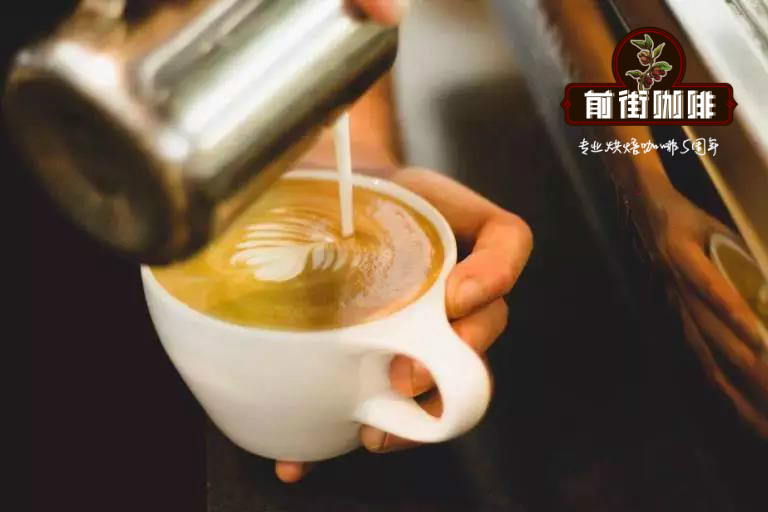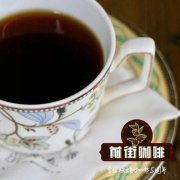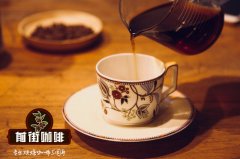Why does espresso extract flow so fast? What is the cause?

Professional coffee knowledge exchange more coffee bean information please follow the coffee workshop (Wechat official account cafe_style)
When you first come into contact with Italian style, it doesn't seem easy to extract a qualified concentrate, and you don't even know where to start. There are so many factors that affect a cup of coffee (temperature, pressure, time, ratio of powder to water, grinding degree, water quality, etc.). In the end, we don't know what the problem is.
Grinding degree
In general, the extraction time of 20 Mel for 30 seconds is the ideal extraction time. (this is only a rough range, and the values will vary flexibly according to the actual situation. Do not ignore the actual situation because of the pursuit of a hard value, as is the case with the values below.)
1. Too rough grinding: if the flow rate is too fast, more than 60 milliliters of coffee will be extracted in less than 20 seconds; the concentrated color is light yellow, the texture is thin, and the oil is maintained for a short time; the taste is high acidity, simple taste and heavy water feeling.
two。 Over-fine grinding: the flow rate is very slow, more than 30 seconds of extraction time, can not extract more than 50 ml of coffee liquid; the color is dark brown, thick; taste bitter, irritating. After the extraction, "a depression of water" is likely to appear on pressed powder, because the water can not pass smoothly through the powder layer and is silted on the surface of pressed powder.
Suggestion: usually in the production of Italian style, you can often use your hands to twist and rub the grinding powder thickness, memory powder thickness feel, convenient to quickly judge the direction of grinding degree adjustment.
Powder quantity
1. Too much powder: the flow rate is so slow that the handle cannot go up to the cooking head.
two。 Too little powder: the flow rate is too fast, the extracted pressed powder is in the shape of mud. The reason is that the gap between the boiling head and the pressed powder is too large, and the impact of the water during the extraction makes the pressed powder tumble.
Recommendations:
1. With regard to the choice of powder bowl, it is recommended to use double powder bowl, the success rate is higher than single powder bowl, and the product is more stable.
two。 Know the carrying capacity of the powder bowl. For example, the load-carrying capacity is 18 grams, and the amount of powder is between 18g ±2 (16murmur20). 、
Liquid weight
1. The weight of the coffee concentrate is generally extracted at 25muri 50g.
two。 Some people concentrate to observe milliliters, others to observe gram weight, I personally prefer to gram weight. Although coffee is liquid, milliliters are taken for granted as a unit for measuring the volume of coffee liquid. However, concentrated oil is a major factor that can not be ignored. The oil of coffee beans will gradually decrease with the passage of time, so the milliliter measurement is not accurate enough.
Extraction time
1. Generally, the reasonable extraction time is between 20m / m2 and 30s (not considering the possibility that the pressure swing extraction may prolong the extraction time. )
two。 The cut-off time to stop extraction is also an important factor in determining the final taste of a concentrated cup. When the color of the coffee liquid becomes lighter, the water wobbles and the flow rate increases, it is time to stop the extraction immediately. At this time, the substances that can be extracted from the coffee are basically extracted completely, and the excessive extraction will produce the taste of bitter, astringent and woody fiber, destroying the concentrated flavor of the whole cup. So it is also very important to choose when to stop.
Boiled Espresso
Espresso is a special method of steaming coffee under steam pressure. The Italians began to use this method to make coffee in the early 20th century.
1. Matters needing attention
☆ to ensure freshness, coffee powder is ground before making each cup of coffee.
☆ to ensure the best flavor and taste, each cup of coffee is prepared separately after the guest orders.
After instant contact with the finely ground coffee powder, only the most aromatic and essential parts of the coffee are extracted by ☆ steam.
two。 Key points of production
Use a heated filter stand. A cold filter rack will affect the taste of coffee. The filter rack must be clean and always placed on the filter head. In order to ensure good tightness, each filter group is equipped with a fixed filter rack.
Use fresh coffee powder. The bean grinder only grinds enough coffee powder for current use.
Each filter group must be kept clean. The remaining coffee grounds will be scorched in contact with the filter group and affect the taste of the next cup of coffee.
Use single-port or double-port filter holder as needed. A single serving requires 7-10 grams of coffee powder, while a double serving requires 10-15 grams of coffee powder. If you pass the coffee, it will flow from the filter rack to the counter.
Fill up the coffee. Use a press stick (about 30 pounds) to squeeze the coffee in the filter. There is a distance of about 1 beat 4 radius between the filled coffee powder and the edge of the filter. Tap the outer edge of the filter rack with a pressure stick to knock off the coffee powder attached to the edge of the filter. Once again, put the pressure bar back on the filter rack and rotate to level the surface of the coffee powder. Wipe off the excess coffee powder on the filter rack with your palm or finger, which can make the gasket seal better, prevent the coffee powder from falling into the coffee, and prolong the service life of the gasket. Put the filter rack back into the filter group. Press the corresponding button to start brewing coffee according to the guest's request. One short drink 1.5 ounces, double short drinks 3 ounces, single long drinks 2 ounces, double long drinks 4 ounces. Coffee flows out 5 seconds after pressing the button 3muri. Starting from the first drop, the whole distillation time is 18-24 seconds. The coffee made in this way will be very delicate and smooth, with a golden foam on the top.
For more professional coffee exchanges, please scan the code and follow Wechat: qiannjie

Please indicate the source of the reprint.
Important Notice :
前街咖啡 FrontStreet Coffee has moved to new addredd:
FrontStreet Coffee Address: 315,Donghua East Road,GuangZhou
Tel:020 38364473
- Prev

Are Yunnan coffee beans fine coffee? what is the variety of Yunnan small-grain coffee beans? what is the flavor and quality?
Professional coffee knowledge exchange more coffee bean information Please follow the coffee workshop (Wechat official account cafe_style) heard that Yunnan produces small-grain coffee, what's the difference between this and ordinary coffee? Small-grain coffee is different from other large-grain coffee, but the varieties are different. For example, Yunnan's small-grain coffee belongs to
- Next

What is the impact of the grindability of coffee beans on making coffee? What happens when the coffee powder is thick and fine?
Professional coffee knowledge exchange more coffee bean information Please pay attention to the coffee workshop (Wechat official account cafe_style) medium or medium is not a very accurate description. The actual effect is to make a cup and then adjust it according to the taste of the coffee. Until we find the most appropriate state. However, the grinding thickness varies depending on the number of cups used to make coffee. Because
Related
- Beginners will see the "Coffee pull flower" guide!
- What is the difference between ice blog purified milk and ordinary milk coffee?
- Why is the Philippines the largest producer of crops in Liberia?
- For coffee extraction, should the fine powder be retained?
- How does extracted espresso fill pressed powder? How much strength does it take to press the powder?
- How to make jasmine cold extract coffee? Is the jasmine + latte good?
- Will this little toy really make the coffee taste better? How does Lily Drip affect coffee extraction?
- Will the action of slapping the filter cup also affect coffee extraction?
- What's the difference between powder-to-water ratio and powder-to-liquid ratio?
- What is the Ethiopian local species? What does it have to do with Heirloom native species?

